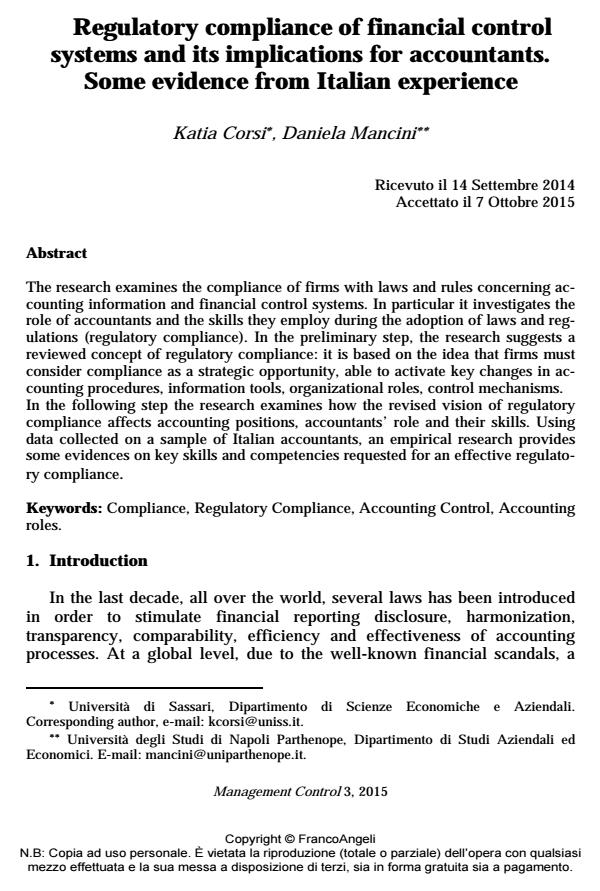Regulatory compliance of financial control systems and its implications for accountants. Some evidence from Italian experience
Journal title MANAGEMENT CONTROL
Author/s katia Corsi, Daniela Mancini
Publishing Year 2015 Issue 2015/3
Language English Pages 27 P. 65-91 File size 160 KB
DOI 10.3280/MACO2015-003005
DOI is like a bar code for intellectual property: to have more infomation
click here
Below, you can see the article first page
If you want to buy this article in PDF format, you can do it, following the instructions to buy download credits

FrancoAngeli is member of Publishers International Linking Association, Inc (PILA), a not-for-profit association which run the CrossRef service enabling links to and from online scholarly content.
The research examines the compliance of firms with laws and rules concerning accounting information and financial control systems. In particular it investigates the role of accountants and the skills they employ during the adoption of laws and regulations (regulatory compliance). In the preliminary step, the research suggests a reviewed concept of regulatory compliance: it is based on the idea that firms must consider compliance as a strategic opportunity, able to activate key changes in accounting procedures, information tools, organizational roles, control mechanisms. In the following step the research examines how the revised vision of regulatory compliance affects accounting positions, accountants’ role and their skills. Using data collected on a sample of Italian accountants, an empirical research provides some evidences on key skills and competencies requested for an effective regulatory compliance.
Keywords: Compliance, Regulatory Compliance, Accounting Control, Accounting roles.
- Accounting Information Systems in an Open Society. Emerging Trends and Issues Daniela Mancini, in MANAGEMENT CONTROL 1/2016 pp.5
DOI: 10.3280/MACO2016-001001 - Detection of fraud in financial reporting of small and medium entities in the field of manufacturing industry Denis Kušter, in Ekonomija: teorija i praksa /2021 pp.17
DOI: 10.5937/etp2102017K
katia Corsi, Daniela Mancini, Regulatory compliance of financial control systems and its implications for accountants. Some evidence from Italian experience in "MANAGEMENT CONTROL" 3/2015, pp 65-91, DOI: 10.3280/MACO2015-003005